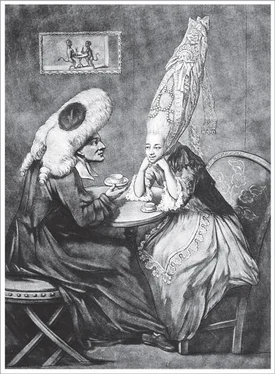Bill Bryson - At Home
Здесь есть возможность читать онлайн «Bill Bryson - At Home» весь текст электронной книги совершенно бесплатно (целиком полную версию без сокращений). В некоторых случаях можно слушать аудио, скачать через торрент в формате fb2 и присутствует краткое содержание. Жанр: Старинная литература, на английском языке. Описание произведения, (предисловие) а так же отзывы посетителей доступны на портале библиотеки ЛибКат.
- Название:At Home
- Автор:
- Жанр:
- Год:неизвестен
- ISBN:нет данных
- Рейтинг книги:4 / 5. Голосов: 1
-
Избранное:Добавить в избранное
- Отзывы:
-
Ваша оценка:
- 80
- 1
- 2
- 3
- 4
- 5
At Home: краткое содержание, описание и аннотация
Предлагаем к чтению аннотацию, описание, краткое содержание или предисловие (зависит от того, что написал сам автор книги «At Home»). Если вы не нашли необходимую информацию о книге — напишите в комментариях, мы постараемся отыскать её.
At Home — читать онлайн бесплатно полную книгу (весь текст) целиком
Ниже представлен текст книги, разбитый по страницам. Система сохранения места последней прочитанной страницы, позволяет с удобством читать онлайн бесплатно книгу «At Home», без необходимости каждый раз заново искать на чём Вы остановились. Поставьте закладку, и сможете в любой момент перейти на страницу, на которой закончили чтение.
Интервал:
Закладка:
Concrete was one of the most exciting products of the nineteenth century. As a material, it had been around for a very long time—the great dome of the Pantheon in Rome is made of concrete; Salisbury Cathedral stands on concrete foundations—but the modern breakthrough for it came in 1824 when Joseph Aspdin, a humble bricklayer in Leeds, in the north of England, invented portland cement, so called to suggest that it was as attractive and durable as portland stone. Portland cement was vastly superior to any existing product. It even performed better in water than the Reverend James Parker’s Roman cement. How Aspdin invented his product has always been something of a mystery, because making it required certain precisely measured steps—namely, pulverizing limestone to a particular degree of fineness, mixing it with clay of a specific moistness, and baking the whole at temperatures much higher than would be found in a normal lime kiln. None of this was ever going to be hit upon by chance. What gave Aspdin the hunch to alter the constituents as he did and then to conclude that they would make a product that would set harder and smoother if heated to an extreme degree is a puzzle that cannot be answered, but somehow he did it and it made him rich.
For years, Edison was captivated by concrete’s possibilities, and around the turn of the century he decided to act on the impulse in a big way. He formed the Edison Portland Cement Company and built a huge plant near Stewartsville, New Jersey. By 1907, Edison was the fifth-biggest cement producer in the world. His researchers patented more than four dozen improved ways of making quality cement in bulk. Edison cement built Yankee Stadium and the world’s first stretch of concrete highway, but his abiding dream was to fill the world with concrete houses.
The plan was to make a mold of a complete house into which concrete could be poured in a continuous flow, forming not just walls and floors but every interior structure—baths, toilets, sinks, cabinets, doorjambs, even picture frames. Apart from a few odds and ends like doors and light switches, everything would be made of concrete. The walls could even be tinted, Edison suggested, to make painting forever unnecessary. A four-man team could build a new house every two days, he calculated. Edison expected his concrete houses to sell for $1,200, about a third of the cost of a conventional home of the same size.
It was a wild and ultimately unrealizable dream. The technical problems were overwhelming. The molds, which were of course the size of the house itself, were ridiculously cumbersome and complex, but the real problem was filling them smoothly. Concrete is a mixture of cement, water, and aggregates—that is, gravel and small stones—and it is in the nature of aggregates to want to sink. The challenge for Edison’s engineers was to formulate a mixture liquid enough to flow into every corner of every mold, but thick enough to hold its aggregates in suspension in defiance of gravity, while hardening to a smooth, uniform consistency of sufficient quality to persuade people that they were purchasing a home and not a bunker. It proved an impossible ambition. Even if all else went well, the engineers calculated, the house would weigh 450,000 pounds, causing all manner of ongoing structural strains.
All the technical challenges, plus problems of oversupply generally within the industry (which Edison’s huge plant did much to aggravate), guaranteed that Edison would always struggle to make money on the enterprise. Cement making was a difficult business anyway because it was so seasonal. But Edison pressed on and designed a range of concrete furnishings—bureaus, cupboards, chairs, even a concrete piano—to go with his concrete houses. He promised that soon he would offer, for just $5, a double bed that would never wear out. The entire range was to be unveiled at a cement industry show in New York in 1912. In the event, when the show opened, the Edison stand was bare. No one from the Edison company ever offered an explanation. It was the last anyone ever heard of concrete furniture. As far as is known, Edison never discussed the matter.
A few concrete houses were built and some actually still stand in New Jersey and Ohio, but the general concept clearly never caught on, and concrete houses became one of Edison’s more costly failures. That is really saying something, for Edison was good at making things the world didn’t yet have but terrible at seeing how it would choose to make use of them. He completely failed, for instance, to see the potential of the phonograph as a medium for entertainment, but thought of it only as a device for taking dictation and archiving voices—he actually called it “the speaking machine.” For years he refused to accept that the future of motion pictures lay in projecting images on screens because he hated the thought that they could become visible to someone who had slipped into the viewing chamber without buying a ticket. For a long time he held out for the idea of keeping moving images securely inside hand-cranked peepshow boxes. In 1908 he confidently declared that airplanes had no future.
After his costly failures with cement, Edison moved on to other ideas that mostly proved to be impractical or demonstrably harebrained. He developed an interest in warfare and predicted that soon he would be able to induce mass comas in enemy troops through “electrically charged atomizers.” He also concocted a plan to build giant electromagnets that would catch enemy bullets in flight and send them back the way they had come. He invested heavily in an automated general store in which customers would put a coin in a slot and a moment later a bag of coal, potatoes, onions, nails, hairpins, or other desired commodity would come sliding down a chute to them. The system never worked. It never came close to working.
Which brings us at last to the niche in the wall and the world-changing object it contained: the telephone. When Alexander Graham Bell invented the telephone in 1876, no one anywhere, Bell included, saw its full potential. Many didn’t see any potential for it at all. Executives from Western Union famously dismissed the phone as “an electrical toy.” So Bell proceeded independently and did rather well out of it, to say the least. The Bell patent (No. 174,465) became the single most valuable patent ever granted. All Bell did really was put together existing technologies. The components necessary to make telephones had existed for thirty years, and the principles were understood. The problem wasn’t so much with getting a voice to travel along a wire—children had long been doing that with two tin cans and a length of string—as with amplifying it so that it could be heard at a distance.
In 1861, a German schoolteacher named Johann Philipp Reis built a prototype device, and even called it a “Telephon,” for which reasons Germans naturally tend to credit him with the invention. The one thing Reis’s phone didn’t do, however, was actually work, at least as far as could be told at the time. It could send only simple signals—primarily clicks and a small range of musical tones—and not effectively enough to let it challenge the preeminence of the telegraph. Ironically, it was later discovered that when the contact points on Reis’s device became fouled with dust or dirt, they were able to transmit speech with startling fidelity. Unfortunately, Reis, with Teutonic punctiliousness, had always kept his equipment impeccably shiny and clean, and so went to his grave never knowing how close he had come to producing a working instrument. At least three other men, including the American Elisha Gray, were well on the road to building working phones when Bell had his breakthrough moment in Boston in 1876. Gray actually filed something called a patent caveat—a sort of holding claim that allowed one to protect an invention that wasn’t quite yet perfected—on the very day that Bell filed his own, more formal patent. Unfortunately for Gray, Bell beat him by a few hours.
Читать дальшеИнтервал:
Закладка:
Похожие книги на «At Home»
Представляем Вашему вниманию похожие книги на «At Home» списком для выбора. Мы отобрали схожую по названию и смыслу литературу в надежде предоставить читателям больше вариантов отыскать новые, интересные, ещё непрочитанные произведения.
Обсуждение, отзывы о книге «At Home» и просто собственные мнения читателей. Оставьте ваши комментарии, напишите, что Вы думаете о произведении, его смысле или главных героях. Укажите что конкретно понравилось, а что нет, и почему Вы так считаете.












